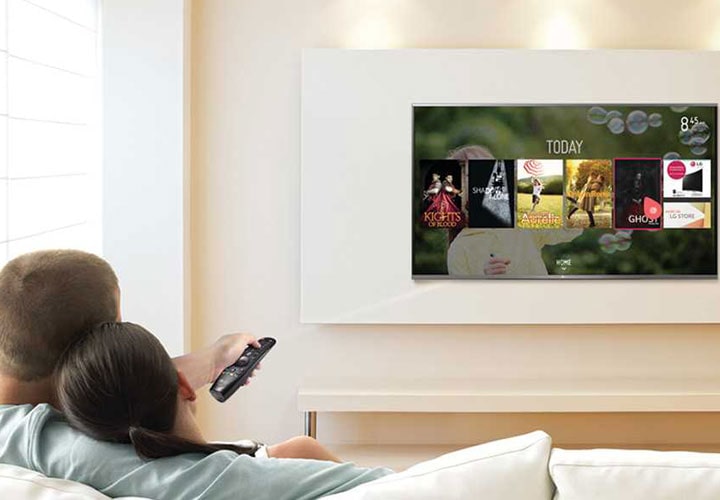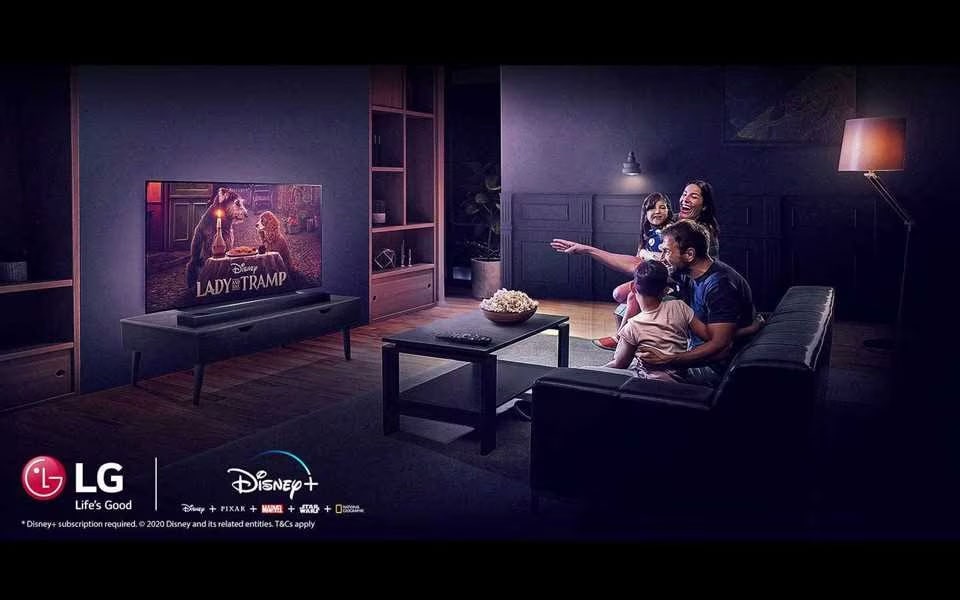We use cookies, including cookies from third parties, to enhance your user experience and the effectiveness of our marketing activities. These cookies are performance, analytics and advertising cookies, please see our Privacy and Cookie policy for further information. If you agree to all of our cookies select “Accept all” or select “Cookie Settings” to see which cookies we use and choose which ones you would like to accept.
UP & COMING
Best TVs for movies
Love movie nights at home? Recreate the cinema by choosing the right TV. From Dolby Atmos® audio to advanced screen technology, our guide reveals the features that matter for movies…
Blockbuster movies deserve the best TV. Improving television technology means you can now enjoy the cinema experience at home.
The best TVs for movies deliver…
- 4K Ultra HD streaming and Ultra HD Blu-ray discs
- Advanced screen technology
- Dolby Atmos audio and Dolby Vision picture
- Wide viewing angle and big screens
Learn how to buy the best TV for movies with our guide.
What is 4K?
4K – also known as Ultra HD – is the screen resolution found on most new TVs. 4K TVs have four times as many pixels as Full HD sets – with around 8.3 million packed into the screen. Four times as many pixels means four times the detail.
Why 4K for movies?
To get the best from a 4K TV, you need content shot or mastered in 4K. More cinema releases are being filmed in 4K.
Movie franchises like the Marvel Cinematic Universe will all be released in 4K. New titles will be produced in 4K and past titles remastered.
What is the best 4K TV to buy for movies?
The best 4K TVs combine 4K resolution with other picture technologies. The ultimate TVs for 4K are OLED. These combine 4K resolution with revolutionary screen tech, creating the deepest shades of black.
Most 4K TVs use LED screen technology. Premium models use technologies like NanoCell and local dimming to create picture quality not normally found on LED TVs.
For the best movie experience, choose a 4K TV with an OLED or NanoCell screen.
HDR and Dolby Vision
What is HDR?
High-dynamic-range (HDR) is a video format that enhances the extra pixels afforded by 4K resolution. HDR creates brighter, more vibrant colours and greater contrast between the lightest and darkest shades. HDR video comes in different formats, such as HDR 10 and Dolby Vision.
Why HDR for movies?
Dolby Vision is the most advanced HDR format and is widely regarded the best way to watch movies. The number of Dolby Vision movies is growing too: Bohemian Rhapsody, A Star is Born and Avengers: Endgame are among the biggest Dolby Vision movies in recent months. There are many, many more planned for the coming months and years – see the list of Dolby Vision releases.
What is the best TV for HDR movies?
TVs compatible with Dolby Vision are the best TVs for movies. This generally means choosing a premium TV – either an OLED or a top-of-the-range 4K LED TV like NanoCell.
Both these technologies – OLED and NanoCell – get the best from Dolby Vision, thanks to their colour-boosting credentials. See HDR at its very best.
Beyond Dolby Vision? Dolby isn’t the only HDR format available – look for a TV that is equally compatible with HDR 10, Technicolor and HLG.
Dolby Atmos
What is Dolby Atmos?
Dolby Atmos is surround sound technology that frees audio from traditional channels, so it moves all around you – even overhead. This object-based audio can be found in premium cinemas and is now being recreated in the latest TVs and soundbars. Learn more about Dolby Atmos
Why does Dolby Atmos matter for movies?
Because most new movies are recorded with a Dolby Atmos soundtrack. This gives directors greater control over the audio – sounds can be isolated and placed with precision. Big-budget movies such as Beatles fantasy Yesterday and the live-action take on the Lion King are in Dolby Atmos – along with Charlies Angels, Frozen 2 and the Jumanji: Return to the Jungle.
What is the best TV to buy?
New Dolby Atmos TVs recreate the effect of this cinema sound in your home. Sound is placed around your room using a combination of built-in speakers and clever technology that virtualises the effect of overhead and side speakers. Choose a TV with powerful built-in speakers, a high wattage and/or front-firing capabilities.
Screen size and viewing angle
What is screen size and viewing angle?
Screen size is the dimension of your TV in inches. Viewing angle is the range it can be watched in good quality when you’re not sat directly in front of it. A poor viewing angle makes the picture hazy if sat at an off-centre from the screen.
Why does it matter for movies?
If you have several people in the room enjoying a movie, not everyone will be watching directly in front of the TV.
When it comes to the best TVs for movies, choose one with large screen and a wide viewing angle that allows everyone to experience 4K resolution, wherever they’re sat. That means no break-up in picture and amazing quality.
What is the best TV to buy for movies?
Premium 4K LED TVs and OLED televisions both offer wide viewing angles. With these, you can enjoy the same picture quality from any angle – and colour remains accurate and bright.
Once you’ve chosen the right screen technology, next is the TV size. Take your room size into account – don’t choose a TV that is too big for it.
Measure how far away you’ll be sitting when viewing before buying. Here’s how big your screen size should be, in comparison to how far away you’re sat:
- 7ft: 32”
- 8ft: 40-43”
- 9ft–10ft: 48”-50”
- 11ft–12ft: 55”
- 13ft–14ft: 65”+
High frame rate cinema
What is high frame rate?
Frame rate refers to the rate at which a TV displays frames. A high frame rate (HFR) means a TV can display a higher number of frames per second (fps) than the current standard of 24-30fps.
A higher frame rate means smooth picture and motions on-screen – replicating cinematic-quality standards.
Why does high frame rate matter for movies?
Studios are now filming titles at higher frame rates to achieve more lifelike visuals. A higher frame rate helps when the action picks up in a blockbuster movie.
Epics like Peter Jackson’s Hobbit trilogy were shot at 48fps, while James Cameron’s Avatar sequel is likely to build on this with reports of a 60fps rate.
What is the best TV to buy for movies?
OLED TVs possess the highest frame rates of all screens. They use either 2K HFR or 4K HFR technology. Both provide smoother motion pictures.
Models with 2K HFR can display content at a 120fps rate, guaranteeing crisp, blur-free action. TVs that use 4K HFR can handle 4K content at a higher frame rate too, showcasing fast-paced movies in perfect clarity.
Make epic movie nights a reality with a powerful NanoCell TV. Or experience the ultimate in home cinema screens with an OLED TV.



